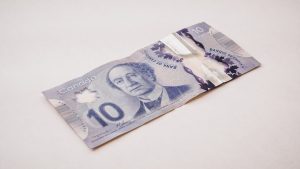When it comes to forex trading, having the right payment methods is crucial. A credit card can be a convenient payment option for forex traders, but not all credit cards are created equal. In this article, we will explore the types of credit cards that can be used for forex trading.
Forex trading involves buying and selling currencies in the foreign exchange market. It is a highly volatile and complex market, but it can be profitable if done correctly. One of the advantages of forex trading is the ability to trade 24 hours a day, five days a week. This means that traders can react quickly to market changes and take advantage of opportunities as they arise.
When it comes to funding a forex trading account, there are several payment options available, including bank transfers, e-wallets, and credit cards. Credit cards are a popular payment method because they are widely accepted and offer convenience and flexibility.
However, not all credit cards are suitable for forex trading. Some credit cards may charge high fees or have restrictions on international transactions. Here are the types of credit cards that can be used for forex trading:
1. International credit cards
International credit cards are designed for use outside of your home country. They typically have lower foreign transaction fees and higher credit limits than domestic credit cards. International credit cards are issued by major credit card companies such as Visa, Mastercard, and American Express.
When using an international credit card for forex trading, it is important to check the transaction fees and currency conversion rates. Some credit cards may charge a currency conversion fee of up to 3%, which can add up quickly for frequent forex traders.
2. Prepaid credit cards
Prepaid credit cards are a good option for forex traders who want to control their spending and avoid overspending. Prepaid credit cards work like debit cards, but they are not linked to a bank account. Instead, you load them with a set amount of money, and you can only spend what you have loaded onto the card.
Prepaid credit cards can be used for forex trading, but they may have higher fees and lower credit limits than traditional credit cards. It is important to check the fees and terms and conditions before using a prepaid credit card for forex trading.
3. Rewards credit cards
Rewards credit cards offer cashback, points, or miles for every purchase made with the card. Some rewards credit cards offer higher rewards for certain categories, such as travel or dining. If you are a frequent forex trader, a rewards credit card can help you earn rewards on your trading activity.
However, it is important to check the terms and conditions of the rewards program. Some rewards credit cards may have restrictions on earning rewards for certain types of transactions, such as cash advances or balance transfers.
4. Business credit cards
Business credit cards are designed for small business owners and offer benefits such as cashback or rewards for business expenses. If you are a forex trader who operates as a business, a business credit card can help you keep your personal and business expenses separate.
Business credit cards may have higher credit limits and more generous rewards programs than personal credit cards. However, it is important to check the terms and conditions of the business credit card to ensure that it can be used for forex trading.
In conclusion, credit cards can be a convenient payment method for forex trading, but not all credit cards are suitable. International credit cards, prepaid credit cards, rewards credit cards, and business credit cards are the types of credit cards that can be used for forex trading. It is important to check the fees and terms and conditions of the credit card before using it for forex trading.






